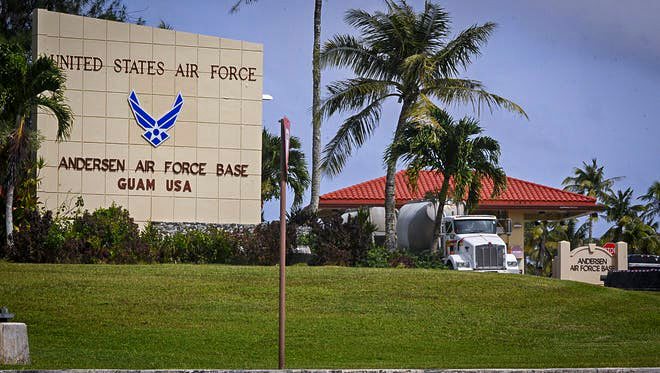The U.S Missile Defence Agency (MDA) is proposing to launch the initial flight test of Guam’s missile defence system in the first quarter of fiscal 2025, which would be followed by annual tests in subsequent years.
According to the MDA’s environmental assessment published today, the proposed action would include up to two flight tests or tracking exercises per year. They would be deployed from Andersen Air Force Base or at sea from a U.S Navy ship.
“A flight test represents a target missile flight, an interceptor missile flight, an intercept of a target missile, or a test of sensors independent of missile flight,” states the proposed action.
The proposed tests, MDA said, aim to validate the interoperability of multiple sensors and interceptor systems from the MDA, Army and Navy that could become part of a missile defence system developed to protect Guam.
The MDA is building an enhanced integrated air and missile defence architecture touted to provide 360-degree protection for Guam in the face of constant threats from China or North Korea.
The Indo-Pacific Command has stamped the US$10 billion Guam project as a top priority amid the growing tensions in the region.
MDA said the proposed flight tests and tracking exercises are necessary for research to evaluate the missile defence system’s ability to counter the threat presented by short-, mid- and long-range ballistic missiles, cruise missiles and hypersonic missiles in a realistic environment.
The first test targeted would include launching a standard missile interceptor against a medium-range ballistic missile target.
“For a single flight test, multiple interceptors and targets may be utilised. A tracking exercise involves using sensors to scan and track a target with no interceptor,” MDA said.
Based on the plan, the target would be air-launched from a C-17 or similar aircraft at an altitude greater than 20,000 feet, at least 800 nautical miles east of Guam in the western Pacific Ocean.
The interceptor would launch from Northwest Field on AAFB. “The first stage booster would separate from the interceptor quickly after launch and would land on a remote, uninhabited area of AAFB,” the assessment report said.
“Intercept of the SM-3 and the target would occur in the exosphere (the outermost layer of Earth’s atmosphere) above the BOA of the western Pacific Ocean greater than 200 nautical miles from Guam,” the report said.
Subsequent debris, such as the pallet and parachutes used to air-launch the target and expended booster stages, are projected to land on the ocean’s surface greater than 88 nautical miles from Guam and sink to the ocean floor.
MDA said the ship-based interceptor launches would not be deployed from Guam grounds.
“During the sea-based flight test scenario, the interceptor would be launched from a U.S Navy Aegis Cruiser or Destroyer at sea in the western Pacific Ocean. At-sea flight tests could include an SM-2 or SM-6, in addition to the SM-3,” MDA said.














